

What is Autobiographical Art? (Explained)
The concept of autobiographical art is one that people may not have heard of, but when you look at it in more detail, you’ll quickly realize that it’s also relatively straightforward to understand.
People often think of a piece of art in terms of the movement or style the artist was working in. So, when a person thinks of a famous artwork like Bernini’s sculpture of Apollo and Daphne, they think of it in terms of Baroque sculpture.
However, there are other ways to think of art, especially ways that center on the creator of artwork expressing who they are – and that’s where autobiographical art comes in.
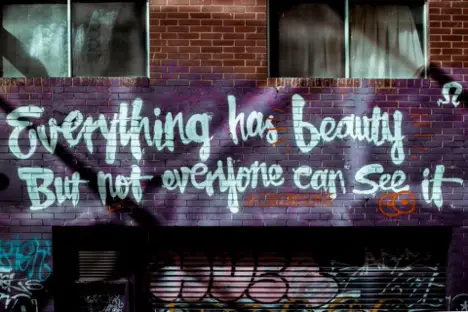
(This article may contain affiliate links and I may earn a commission if you make a purchase)
Photo: Unsplash
Table of Contents
Understanding Autobiographical Art
If you find yourself wondering “what is autobiographical art?” don’t worry, you’re not alone.
The answer to that question lies in the word “autobiographical.” An autobiography is generally defined as a piece of literature or written work that tells the story of the life of the writer/author.
Similarly, the definition of autobiographical art is artwork expressing something about the artist’s life.
It should be noted that this type of art is not necessarily the same as a self-portrait. A self-portrait is a visual representation of what an artist looks like and is created by the artist themselves. While self-portrait can fall under the auspices of autobiographical art, it is not the be-all and end-all of the genre.
What is Autobiographical Art a Representation of?
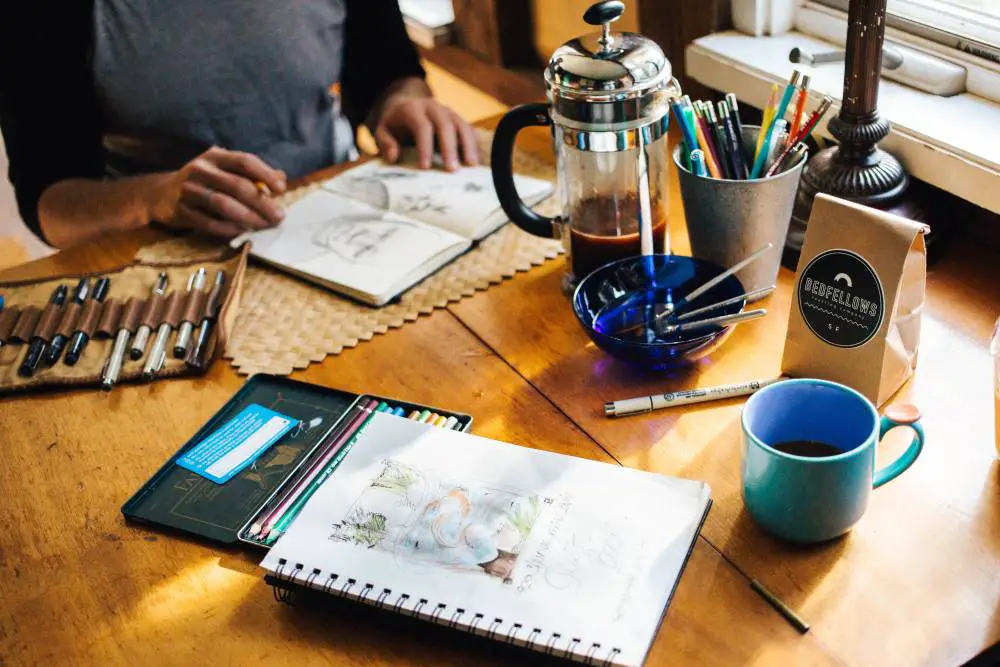
As mentioned, this type of art covers the life of the artist who creates it. However, the question of “what is autobiographical art?” can be answered in several ways. An art piece can be considered autobiographical if it:
- It is an artwork expressing something about the artist’s life and biography.
- It shows what the artist thinks about their personal conception of themselves and how and where they fit into society as a whole.
- It shows the artist’s biography visually.
- A piece of art that examines the underlying, unconscious motivations that the artist may have had for choosing certain subject matter, materials, and other elements of the work.
So, the simplest way to answer the question of “what is autobiographical art?” is to say that it is art where the artist’s life and biography are important for proper subject analysis.
It’s essential to keep in mind that while an artist may choose to create some autobiographical art, all their relevant art need not fall into this genre. For example, Bernini’s sculpture “ Bust of Costanza Bonarelli ” can be considered autobiographical, as he was having an affair with the subject of the work when it was made.
However, his more mythological works, such as “Aeneas, Anchises, and Ascanius,” “Neptune and Triton,” and the above-mentioned “Apollo and Daphne,” are generally not considered autobiographical in focus.
Do You Need to Look at an Artist’s Life to Interpret Autobiographical Art?
When artwork relates to an artist’s life, it’s easy to wonder if that is the only way in which you should look at and interact with it. After all, if the piece is telling us something about the artist’s biography or their view of themselves, it must have been made only to showcase that part of their lives.
However, this isn’t the case. In literature, there is the concept of the Death of the Author – which is to say, once an author (or artist) creates a work of art, they cease to have control over its meaning. Rather, it’s left to the audience to determine the message of the piece.
The Sculpture of David

For example, Michaelangelo’s sculpture of David represents his place in the artistic society of Italy during the time of its conception and creation. The statue was initially worked on by the sculptors Agostino di Duccio and Antonio Rossellino over four decades or so before Michaelangelo began his own work on it.
He was awarded the commission over other well-known sculptors and artists, including Da Vinci, and began working on it at the age of 26. The decision to go with him is an indication of how well received his earlier works were, including the well-known Pietà , today located in St. Peter’s Basilica.

The Biblical Story of David
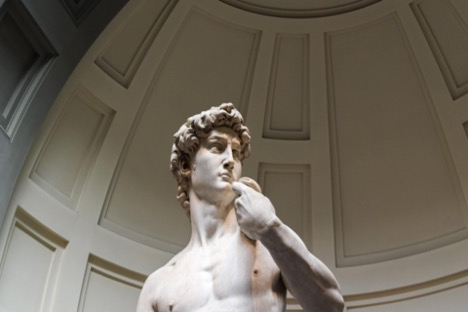
However, over the years, the statue came to represent more than just Michaelangelo’s skills or even the biblical story of David, which was the subject of the artwork. It soon came to be considered a symbol of the Republic of Florence and the civil liberties the city-state promised.
As Florence was constantly threatened by more powerful rival states and the power of the Medici family, the statue was positioned in such a way that its glaring eyes were always pointed at Rome, the seat of the Medicis and the focal point of their power.
Abstract Autobiographical Art
It should also be noted that some works of autobiographical art are more abstract and may not seem like a visual autobiography at first glance. For example, Marcel Duchamp’s “ Self-Portrait in Profile ” is an artwork that consists of a square of origami paper torn at the corner. On the other end of the sheet of paper, Dumchamp signed it “Marcel déchiravit” or “Marcel tore this quickly.”
The abstract nature of the work means that it is often not understood as autobiographical. However, the title indicates that it is meant to be read as such – it is a self-portrait of the artist, one that talks about what he feels his place in society was, as well as his interpretation of the motivations behind art (and his own artwork specifically).
Duchamp created 137 such self-portraits, all torn by hand and all autobiographical. At the same time, it’s very likely that a person may not see it as representative of his life and may instead choose to look at it as an artwork devoid of autobiographical meaning.
Lucian Freud “Everything is autobiographical….”
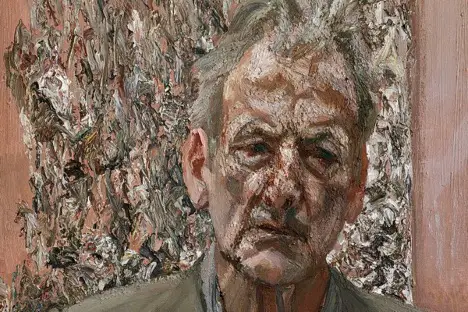
https://stringfixer.com/tags/freud
Other artists claim that all work is autobiography, making any attempt to separate the artist’s life from a piece futile. British artist Lucian Freud once said that “everything is autobiographical and everything is a portrait, even if it’s a chair.” So, it is impossible to separate the artist’s life from a painting or other artwork.
The Viewer’s Interpretation of Autobiographical Artwork
Ultimately, any artwork expressing something about the artist’s life can be considered autobiographical. The way in which it is interpreted lies with the viewer – there are times in which the impact of the artist’s life on the piece is clear, and it’s easy to understand why it is relevant to the piece.
However, with other works, answering questions about the relevance of the creator’s biography to the piece can be more challenging, and it’s easier to look at other elements, such as the influence of mythology and religion of a piece.
What is Autobiographical Art – Final Thoughts
Now that you have a better understanding of what autobiographical art is, you can really enjoy the stories they tell in all their glory.
It’s important to always remember that art is always an expression, and the artist is trying to tell you a story or speak to you on an emotional level, and when you’re able to really see that, you’re already a pro!
More From Artistry Found
- What is Folk Art? (Explained)
- Street Art vs Graffiti (How are They Different?)
- What is Representational Art? (Explained with Examples)
10 Easy Steps to Finding Your Perfect Art Style (Explained)
Bryan is an artist living in Las Vegas, Nevada who loves travel, ebiking, and putting ketchup on his tacos (Who does that?!). More about Bryan here.
Similar Posts
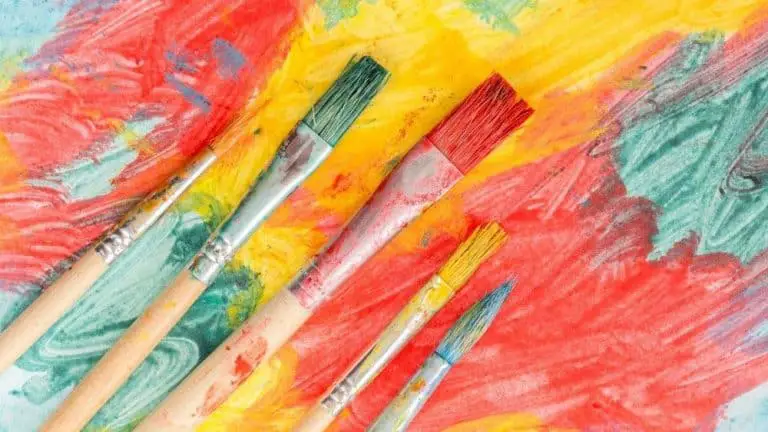
Applied Art vs Fine Art: What’s the Difference?
Applied Art or Fine Art? This is a question often asked by collectors, art lovers, and students alike. However, within the art world, this is an often contentious subject. The term “art” covers a rather broad spectrum, and can include everything from commercial art, to the work of the masters like Michelangelo and Picasso. So,…

Abstract Art: How To Tell When it’s Good (or Bad)
When you look at an abstract art piece, you might think it looks simple to make…but you’d be wrong. This is why many find this style of art hard to interpret. With this in mind, you may be wondering, “what makes abstract art good?” Good abstract art showcases meaning, intention, skill, and expression. Unlike other…

The 4 Most Famous Anthropomorphic Artists (Revealed)
Anthropomorphism is a term that is used across various areas of life. Some centuries back, the term was used as an attribute of human beings to divine beings. What this means is that anthropomorphism is used to regard God, or even gods, as having human characteristics. But what is anthropomorphism when it comes to art? In…

Every great artist has memorable and instantly recognizable artworks. When you look at one of the paintings of Da Vinci or a play from Shakespeare, you don’t need a label to know who created these works. If you’re just starting out, you might have heard from multiple sources that you need to develop your own…
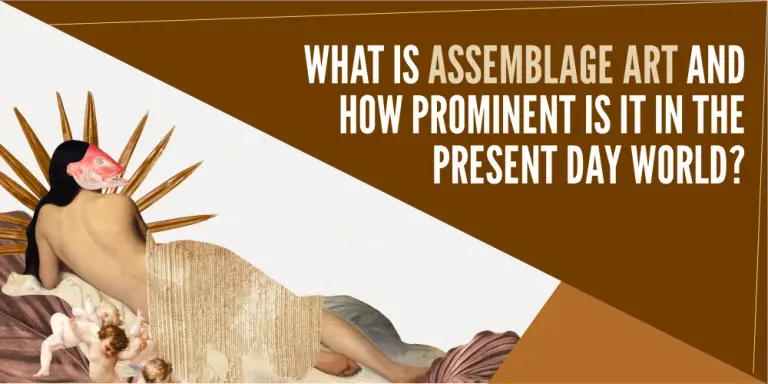
What Is Assemblage Art? (Explained)
The term assemblage means “collection of things.” It refers to an art practice created by using everyday objects in an artistic sense. The art materials can be either natural or man-made and are assembled in such a way as to create a new meaningful piece of art. Assemblage art often revamps damaged or worthless objects…
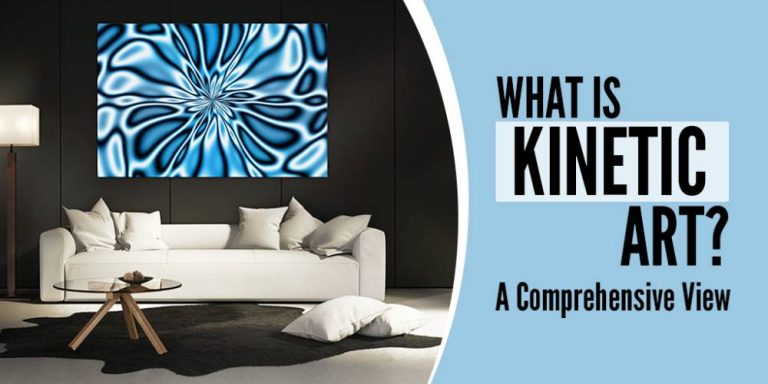
What Is Kinetic Art? – A Comprehensive View
Kinetic art is a type of modern art that requires movement (or the illusion of movement) for the viewer to fully appreciate the message and effect behind the piece. The term ‘kinetic art’ was founded in the 1920s by artists, Naum Gabo and Antoine Pevsner, and was inspired by the movements of American sculptor, Alexander…
Understanding Autobiographical Art: A Comprehensive Guide
What is autobiographical art, defining the genre, identifying characteristics, explore famous autobiographical artists, frida kahlo, vincent van gogh, tracey emin, understanding the impact of autobiographical art, personal narratives, cultural commentary, therapeutic effects, creating your own autobiographical art, finding your theme, choosing your medium, incorporating personal symbols, telling your story, reflecting on your artwork, analyzing your artwork, sharing your work, continuing your artistic journey.
Art is a language that speaks volumes about the artist's personal journey, and no form does this more directly than autobiographical art. This comprehensive guide uncovers the compelling world of autobiographical art, helping you understand its intricacies and even inspiring you to create your own masterpiece. So, if you've ever wondered, "What is autobiographical art?", you're about to find out.
Autobiographical art is a genre where the artist becomes the storyteller, weaving tales of their life experiences through various artistic mediums. It's a way for artists to express themselves and share a piece of their world with others. Here's a closer look at what makes this genre unique.
The simplicity and beauty of autobiographical art lie in its core concept: it's art drawn from the artist's life. Whether it's a painting that captures a pivotal moment or a sculpture that reflects an emotional journey, autobiographical art is deeply personal. It's not just about replicating memories; it's about interpreting them, adding layers of emotion and insight that transform personal experiences into universal stories. In defining "what is autobiographical art", it's important to note that the genre is as diverse as the artists who create it. It can be abstract or realistic, subtle or striking, simple or intricate—each piece is a unique reflection of the artist's life.
While autobiographical art can take many forms, there are certain characteristics that help identify it. Here are a few clues to look for:
- Personal Context: Autobiographical art is rooted in the artist's personal experiences, so it often includes references to specific life events, people, or places.
- Emotional Depth: Since it's a form of self-expression, autobiographical art often conveys strong emotions. The artist's feelings about their experiences are as much a part of the artwork as the physical elements used to create it.
- Symbolism: Artists often use symbols to represent aspects of their life or emotions. These symbols can be personal or universally recognized, adding another layer of meaning to the artwork.
In essence, understanding "what is autobiographical art" involves recognizing these characteristics and appreciating how they come together to tell the artist's story.
Autobiographical art has been a staple in the world of art for centuries. From the vivid self-portraits of Frida Kahlo to the emotionally charged works of Vincent Van Gogh and Tracey Emin, many renowned artists have used this genre to share their personal narratives. Let's explore some of these iconic artists and their contributions to autobiographical art.
If you're trying to understand "what is autobiographical art", Frida Kahlo's work is a great starting point. This Mexican artist used her art to navigate her experiences with pain, love, and identity. Her self-portraits, often filled with intense colors and symbolic elements, are vivid reflections of her life. One of her most famous works, "The Two Fridas", shows two versions of herself sitting side by side, representing her dual heritage and the conflicting identities she grappled with.
Vincent Van Gogh, a Dutch painter known for his expressive use of color and brushwork, also drew heavily from his personal experiences. His works, such as "Starry Night" and "Sunflowers", reflect his emotional state and perceptions of the world around him. Van Gogh's letters to his brother Theo provide further insights into how his life experiences influenced his art, making him a key figure in the world of autobiographical art.
Tracey Emin, a contemporary British artist, uses a variety of mediums—from painting and drawing to installation and sculpture—to share her life experiences. Her work is often provocative and deeply personal, dealing with themes like love, loss, and trauma. One of her most noteworthy pieces is "My Bed", an installation that features her own unmade bed, surrounded by personal items. This raw and intimate piece was a bold statement in the world of autobiographical art, pushing the boundaries of what this genre can encompass.
In exploring these artists, we see how autobiographical art serves as a powerful platform for self-expression, allowing artists to share their personal narratives in a way that resonates with a wider audience.
So, "what is autobiographical art" in terms of its impact? The power of autobiographical art lies in its ability to weave personal narratives, offer cultural commentary, and provide therapeutic benefits. Let's delve into these impacts a little more.
First and foremost, autobiographical art allows artists to tell their own stories. This can be an empowering process, giving artists the creative freedom to express their thoughts, feelings, and experiences. Artists like Frida Kahlo and Vincent Van Gogh used their art to navigate through personal struggles, creating works that resonate deeply with viewers because of their authenticity.
Autobiographical art can also serve as a potent form of cultural commentary. By drawing on their personal experiences, artists can reflect on societal issues and cultural norms, sparking conversations and challenging viewers to see things from a different perspective. For instance, Frida Kahlo's work often touched on themes of gender, identity, and post-colonialism, offering insights into her experiences as a woman and as a Mexican artist.
Lastly, the act of creating autobiographical art can have therapeutic effects. Artists often use their work as a form of self-exploration and healing, finding solace in the act of expressing their innermost thoughts and feelings. Tracey Emin, for example, has spoken about how her art has helped her confront and process traumatic experiences from her past.
In essence, the impact of autobiographical art extends far beyond the individual artist—it serves as a mirror of society, a platform for dialogue, and a source of healing and transformation.
Now that we've explored "what is autobiographical art" and its impacts, you might be wondering how to create your own. The good news is that anyone can create autobiographical art—it's not just for the Van Goghs and Kahlos of the world. Here's a step-by-step guide to help you get started.
The first step in creating your own autobiographical art is finding your theme. What story do you want to tell? What personal experiences, emotions, or ideas would you like to explore? Remember, your theme can be as broad or as specific as you want—it's your story after all!
Next, think about what medium will best serve your theme. Painting, sculpture, photography, mixed media—the choice is yours. Don't be afraid to experiment and try something new. You might find that a certain medium resonates with your theme in unexpected ways.
A key aspect of autobiographical art is the use of personal symbols. These are objects, colors, or motifs that hold personal meaning for you. For example, Frida Kahlo often incorporated symbols from Mexican folk art and mythology into her work. What symbols might you use to tell your story?
Finally, it's time to start creating! Remember, there's no right or wrong way to tell your story. Some artists prefer to work in a more abstract, symbolic style, while others opt for a more literal, narrative approach. Follow your instincts and let your creativity flow.
Remember, creating autobiographical art is a journey, not a destination. Be patient with yourself, enjoy the process, and don't be afraid to take risks. After all, it's your story—the only person who needs to understand it is you.
Once you've taken the plunge into the world of autobiographical art, it's essential to take a step back and reflect on your work. Not only does this help you understand your own art better, but it also allows you to grow and improve as an artist. Let's explore some ways to reflect on your art.
Start by looking at your finished piece with a fresh pair of eyes. What do you see? How does it make you feel? Remember, this isn't about judging whether your artwork is "good" or "bad"—it's about understanding what your piece says about you and your experiences. You might find it helpful to write down your thoughts or discuss them with a friend or fellow artist.
If you feel comfortable doing so, consider sharing your work with others. This could be as simple as showing it to a friend or family member, or as ambitious as submitting it to a local art show. Sharing your work allows you to see it from others' perspectives and can be a rewarding and enlightening experience.
Creating autobiographical art is a journey that never really ends. Each piece you create is a snapshot of a particular moment in your life, and as you grow and change, so too will your art. So keep creating, keep reflecting, and most importantly, keep telling your story.
Whether you're a seasoned artist or a complete beginner, autobiographical art offers a unique and deeply personal way to express yourself. So why not give it a try? You never know what you might discover along the way. Remember, the question of "what is autobiographical art" is a personal one, and the answer is as unique as you are.
If you're intrigued by the concept of autobiographical art and want to explore it further, don't miss the workshop ' Using Your Life For Art ' by Christina Wolfgram. This engaging workshop will provide you with valuable insights and guidance on how to use your life experiences as a source of inspiration for your art.

Live classes every day
Learn from industry-leading creators
Get useful feedback from experts and peers
Best deal of the year
* billed annually after the trial ends.
*Billed monthly after the trial ends.
All Subjects
Art and Philosophy
Study guides for every class, that actually explain what's on your next test, visual autobiography, from class:.
A visual autobiography is a form of self-expression that combines imagery and narrative to convey an individual's personal experiences, thoughts, and emotions. This art form allows artists to communicate their life stories visually, often through photographs, drawings, or mixed media, creating a deeply personal and reflective exploration of identity and personal history.
congrats on reading the definition of visual autobiography . now let's actually learn it.
5 Must Know Facts For Your Next Test
- Visual autobiographies can serve as a therapeutic tool for artists, helping them process their experiences and emotions through creativity.
- This form of self-expression often blurs the lines between traditional autobiography and visual storytelling, emphasizing both personal narrative and artistic interpretation.
- Visual autobiographies are not limited to one medium; they can include photography, painting, collage, video, and digital art, allowing for diverse expressions of identity.
- Artists may use symbolism and metaphor in their visual autobiographies to convey deeper meanings or emotions tied to specific experiences.
- Many contemporary artists utilize social media platforms to share their visual autobiographies, reaching wider audiences and creating interactive narratives.
Review Questions
- Visual autobiography allows artists to engage deeply with their own experiences and emotions by transforming them into visual narratives. This process encourages introspection as artists reflect on their pasts and identities while choosing imagery and techniques that resonate with their stories. By creating these works, artists can confront personal challenges, celebrate achievements, or explore complex feelings, ultimately leading to a better understanding of themselves and their life journeys.
- Symbolism in visual autobiographies plays a critical role by adding layers of meaning to the narrative being conveyed. Artists often incorporate symbols to represent personal experiences or emotions that might not be immediately visible in the imagery. This enhances the storytelling aspect by inviting viewers to interpret the work on multiple levels, prompting deeper engagement with the artist's journey while also allowing for varied interpretations based on individual viewer experiences.
- Social media has significantly transformed the creation and sharing of visual autobiographies by providing artists with instant platforms for expression and feedback. Artists can showcase their work in real-time, receiving immediate responses from a global audience. This interaction fosters community building around shared experiences and encourages dialogue about identity, which can influence the artist's ongoing work. Moreover, social media allows for innovative formats such as short videos or interactive posts that enrich the storytelling process, making visual autobiography more accessible and engaging than ever before.

Related terms
Self-portrait : An artwork created by an artist depicting themselves, often used to explore identity and self-perception.
Narrative art : Art that tells a story or conveys a sequence of events through visual means, often combining text and imagery.
Mixed media : An artistic technique that incorporates various materials and methods into a single artwork, allowing for greater expression and complexity.
" Visual autobiography " also found in:
© 2024 fiveable inc. all rights reserved., ap® and sat® are trademarks registered by the college board, which is not affiliated with, and does not endorse this website..

Draw Together: Autobiographical Drawing
What is Autobiographical Drawing?
Autobiographical drawing is about making images based upon your own experience or life history, as told by you.
This online workshop is based on a workshop by artist and illustrator, Aurora Cacciapuoti. We hope it will give you a chance to ‘narrate’ some aspect of yourself or your life through drawing and collage.
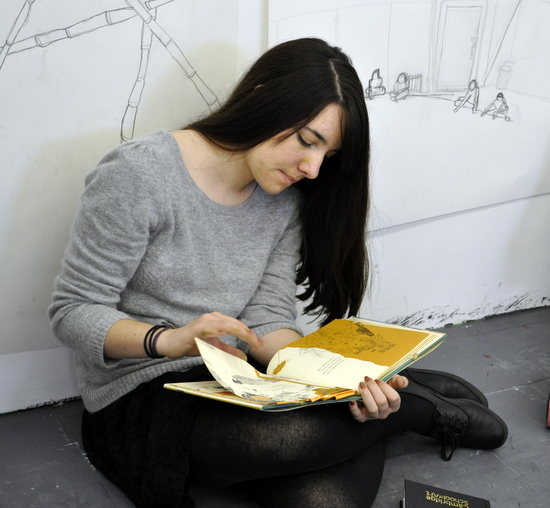
You will make a series of drawings on A5 paper. We will then show you how to sew the pages together using ‘Japanese book binding’ techniques to make a small book all about You.
Through this online course, we will give you some exercises to help you start your drawings, and provide you with a chance to share the images online with other teenagers on the course. We hope that you will be able to support each other’s creative development by contributing constructive feedback about each others work.
We hope that this online course will give you a chance to explore some new drawing materials, approaches and techniques.
You will need
An assortment of drawing materials;
We recommend: nib, pencils, coloured pencils, chalk, pastels. If you don’t have access to these materials then standard colouring pens, pencils, black writing pens, chalks, crayons and pencils are absolutely fine too.
Quite a few pieces of A5, good quality drawing paper,
Old magazines – fashion, sport, nature, geography; any thing that you like.
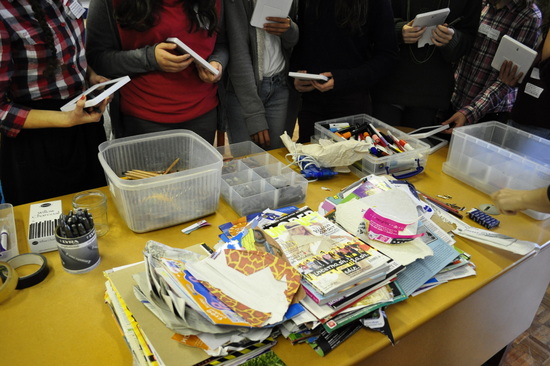
Experimental Self Portrait Exercise
This exercise is designed as a warm up and to ease you into the drawing process. You will draw a series of self portraits that you will be able to use later. We don’t want you to worry about the finished results or even whether you have captured yourself or not, we simply want you to dive into the drawing process, experiment with materials and see where the journey takes you.
For this exercise, you will need plenty of different drawing materials at hand. Allow upwards of 30 minutes. You are going to work very quickly on a series of drawings, allowing no more than a few minutes on each drawing.
Make sure you are ready, with everything that you need around you.
And if you missed that here’s a step-by-step guide of what to do:
Now, looking in the mirror, maybe using a black pen or ink and nib, and, without being worried about the drawing you are making, start to draw a simple line drawing of your face, just looking at your characteristics and features and enjoy making lines. Enjoy exploring making lines with different rhythms and pressures, keep looking at the shape of your face and keep drawing. Only allow a few minutes for this drawing.
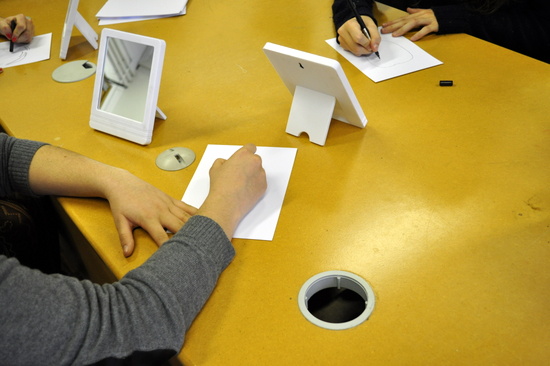
Now, quickly and without thinking, take another piece of paper and another drawing material, maybe a coloured pencil or pastel and make a second drawing. This time you may not want to look in the mirror, but try and remember your face. If this is too difficult you can steel a peek at the mirror! Work quickly and enjoy the process of making lines, looking and drawing. Do not give yourself too much time.
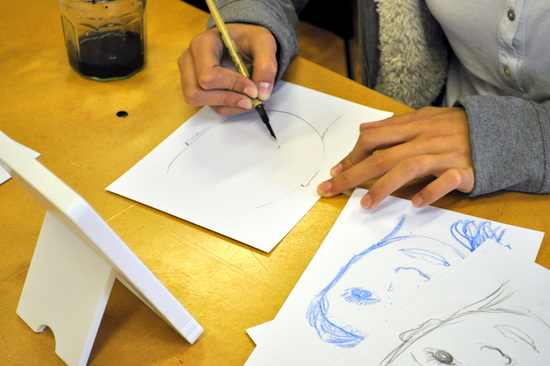
Repeat the process again, this time looking at the mirror, taking another piece of paper and another drawing material, looking and drawing, looking and drawing.
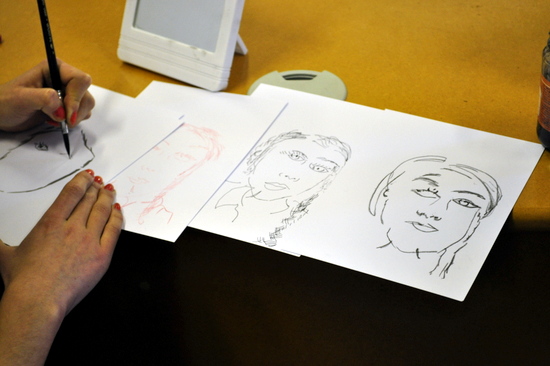
Repeat again and again until you have a series of between 5 and 10 drawings.
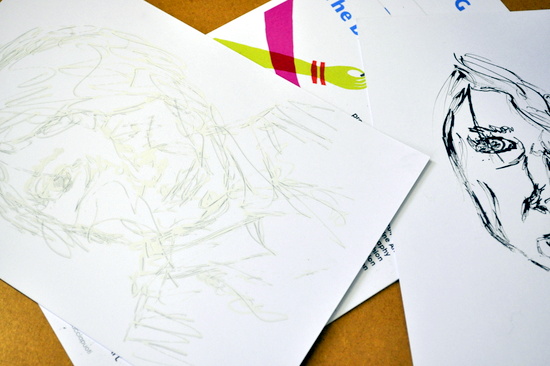
Extension activity: Adding collage and words to one of your drawings
You will need a bit of time and space for this part of the exercise, which will give you a chance to transform your drawings into a personal narrative or ‘autobiographical drawing’. Flip through a pile of old magazines and quickly, without thinking too much, cut out images that you like. You will use these images to collage over, or into, one of the drawings that you made of yourself. Choose one of your self portraits to work with.
Now, spend some time collaging magazine images, that you like or can associate some meaning to, into your drawing. You can also cut up your drawings! You can also add words or a narrative if you like. Good luck and we really look forward to seeing what you make.
If you’d like to work on the other drawings that you drew of yourself, you may want to explore certain themes of your life, like places that you love, want to go to or music that you like as well.
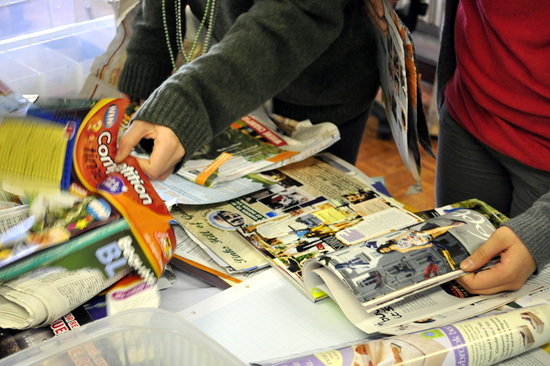
Access other Assignments
- Drawing Space Assignment Exploring the power of drawing as a tool to ‘draw space’ and express how we interact with space and place.
- Tying Your Work Together: Artist Aurora Cacciapuoti Introduces Japanese Book Binding A simple demo on how to bind pages together.
Draw Together: Access Course Materials | AccessArt: Visual Arts Teaching, Learning & Practice March 7, 2013 @ 2:18 pm
[…] Assignment 2: Autobiographical Drawing Using drawing and collage materials to exploring portraiture, and learn how to create a hand bound book of the images produced. […]
- Davis Art Images
- Free Resources
- Job Opportunities
- Write for Davis
- Sign up for the Digital Edition
- SchoolArts Collection
- Get Published in SchoolArts
- Writer’s Guidelines
- Request a Sample Issue
- K12ArtChat the Podcast
- Adaptive Art Resources
- Equity, Diversity, and Inclusion Resources
- Professional Development
- SchoolArts Magazine Online
- Teaching Art Online
- FREE Lessons
- Elementary/Early Childhood
- Middle School
- High School
- Davis Select
- Davis Digital
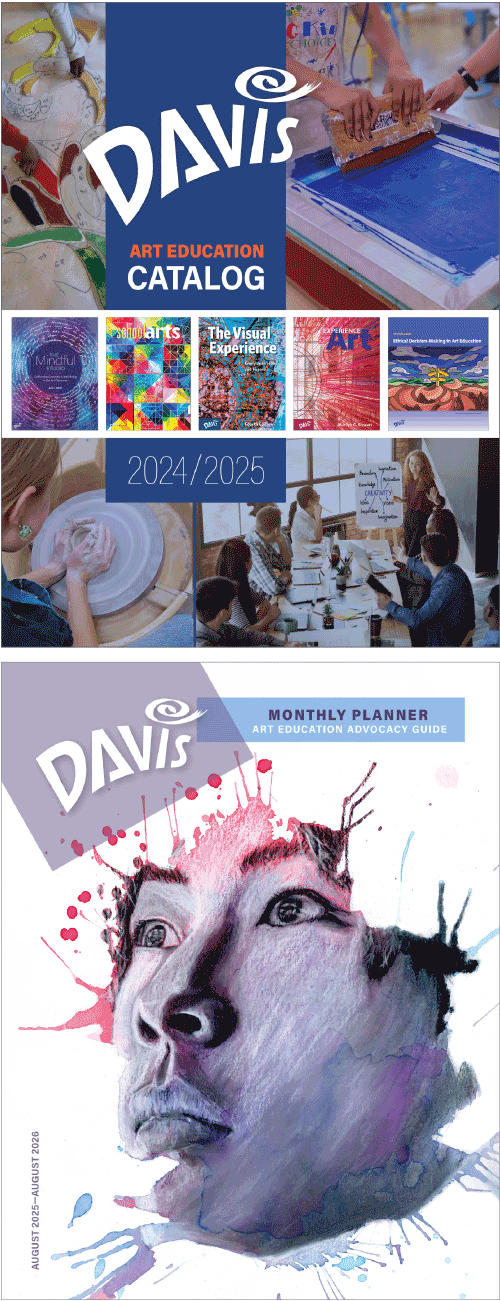
Free Resource
Request Catalog or Planner
- Explorations in Art. Kindergarten
- Explorations in Art. Grades 1–6
- Creative Minds—Out of School
- Early Childhood Books
- Resource Books
- Experience Art
- Exploring Visual Design
- The Visual Experience
- The Davis Studio Series
- Discovering Art History
- Collaborative Tape Art and PiktoTape
- PiktoTape.com
- In-Person and Online Sessions
- Curriculum Implementation
- Complimentary Sessions
- Art Education in Practice
- Davis Select Art Books
- Start a FREE Trail
A Visual Autobiography
We have all had to research and write biographies on different people throughout our educational journeys. For this project, I wanted students to research and reflect on the person they know best—themselves—in a visual artistic manner. A visual autobiography to me is a representation of symbols and characteristics that one uses to describe oneself. The challenge is to choose icons that can accurately express something about yourself while using a minimum of words.
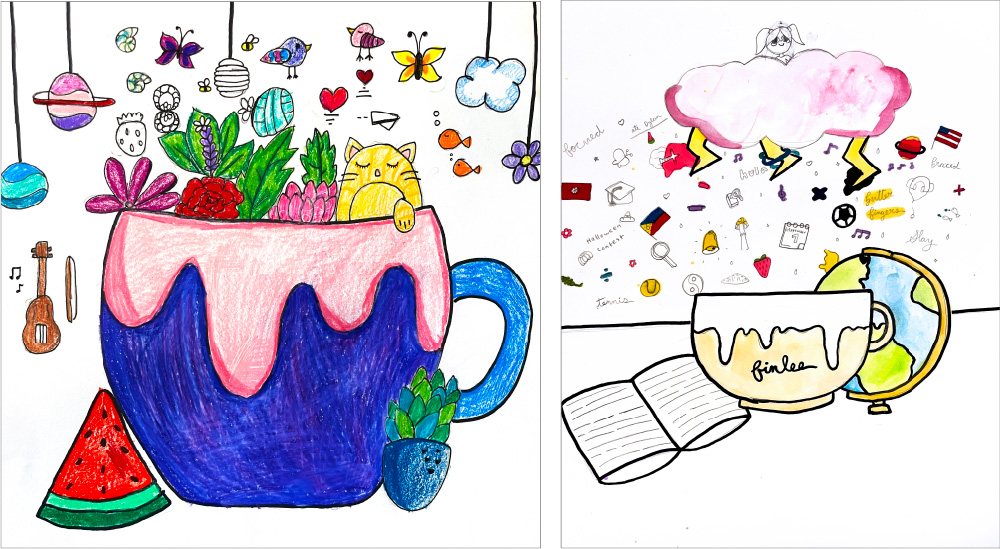
What Is a Visual Autobiography? A visual autobiography to me is a representation of symbols and characteristics that one uses to describe oneself. The challenge is to choose icons that can accurately express something about yourself while using a minimum of words.
In creating their visual autobiographies, I asked students to use images or drawings for at least 80% of the artwork. I also asked them to incorporate the following components into their illustrations:
- Full color or full value.
- A self-portrait illustration.
- Information about yourself as a student.
- Information about yourself as an artist.
- Accomplishments thus far.
- Goals for the future.
- Where you are from and where you currently live.
- Background in art-making: When did you start creating art? Why?
- Who or what is your inspiration as an artist?
Why a Visual Autobiography? Observational drawing is the best way to discover and practice basic drawing techniques. Once acquired, this skill can be applied to any subject in art. Creating portraits helps students learn how to arrange a good composition and teaches them how to use proportion and form and how to build tone and color. Drawing portraits also helps students develop and strengthen their natural drawing abilities and improves their observational skills and the ability to render shape, tone, color, pattern, and texture in a variety of media.
Reflecting on themselves and their artistic journey is an important part of students’ own art-making journey. Having them share this process with others helps to create a sense of community in the art room and throughout the school.
Choosing and Combining Media Media exploration can sometimes be challenging. What media works well with another media? How can multiple media be used properly? I challenged students to combine and experiment with different media and explore on their own. What better way to understand how to use new media than to try it out for themselves? Students made small thumbnail sketches using different kinds of media to see how they worked together. I believe this strengthened their understanding of media usage beyond what a lecture could have done.
Conclusion This assignment encouraged students to dig deeper into themselves as visual art-makers and allowed them to be more reflective as artists. It also created a greater sense of community and empathy as students learned a little more about each other and discovered common characteristics.
Leigh Drake is the visual fine arts instructional specialist for Virginia Beach City Public Schools. [email protected]
National Standard Connecting: Relating artistic ideas and work with personal meaning and external context.
View this article in the digital edition.
Related Articles
Editor’s letter: language, alphabet art room, what’s in a name, read more like this in schoolarts magazine.
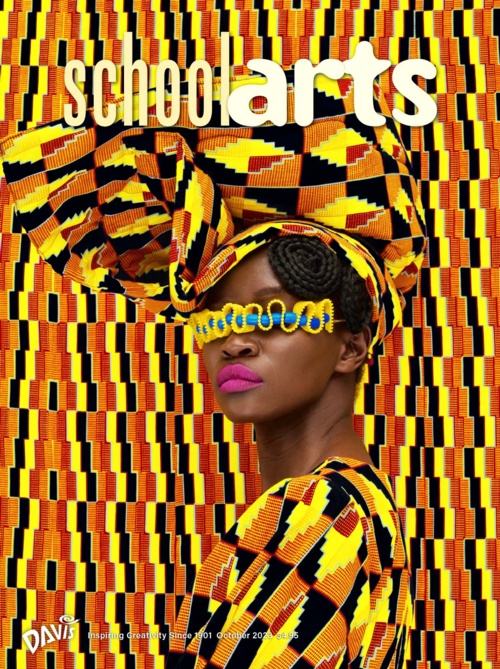
Art teachers incorporate visual language, written language, spoken language, sign language, computer programming language, and more into their lessons. Students create the first letter of their first name using a cut-paper mosaic technique, combine typography with graphic design tools to create name designs, use a CAD program to turn character drawings into 3D-printed figures, design public word sculptures to inspire positive action, and more.
Always Stay in the Loop
Want to know what’s new from Davis? Subscribe to our mailing list for periodic updates on new products, contests, free stuff, and great content.
We use cookies to improve our site and your experience. By continuing to browse our site, you accept our cookie policy. Find out more .
Art as Autobiography - Saul Steinberg Foundation :: Saul Steinberg Foundation
You are using an outdated browser. Please upgrade your browser to improve your experience.
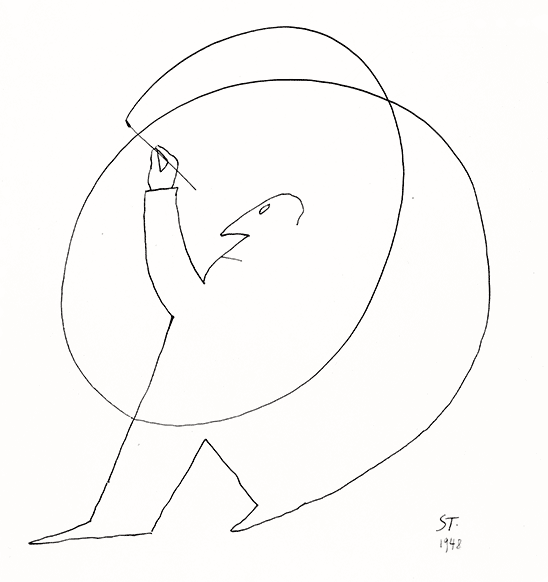
- An Overview
- Chronology 1914-1999
- Search Artwork
- Selected Bibliography
- Public Collections
- Selected Exhibitions
- The Foundation
- Information & Updates
Art as Autobiography
The specifically autobiographic character of the Drawing Tables is not without precedent in Steinberg’s oeuvre, though the clues are usually more indirect: the table in a c. 1954 still life is covered with Steinbergian sketches; the drawing entitled November 26,1965 portrays a day in the artist’s life, calendar style. 64
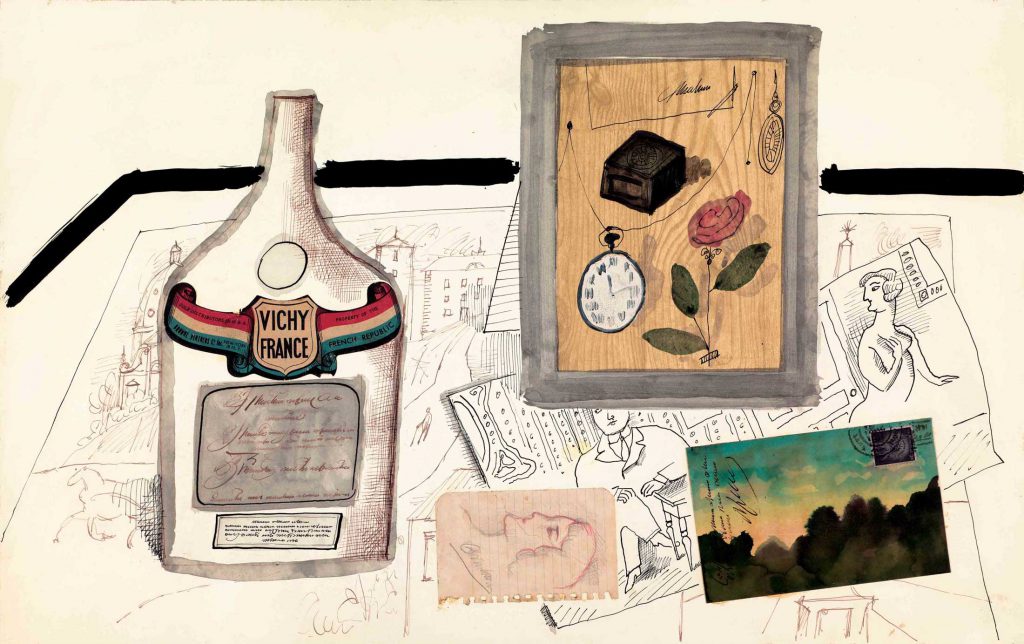
Apr 12 1969 subtly announces the draftsman’s presence by embedding the date of execution within Cubist geometries; dead center in Konak is the collaged hotel bill Steinberg kept from his 1953 stay at the Istanbul hotel. 65
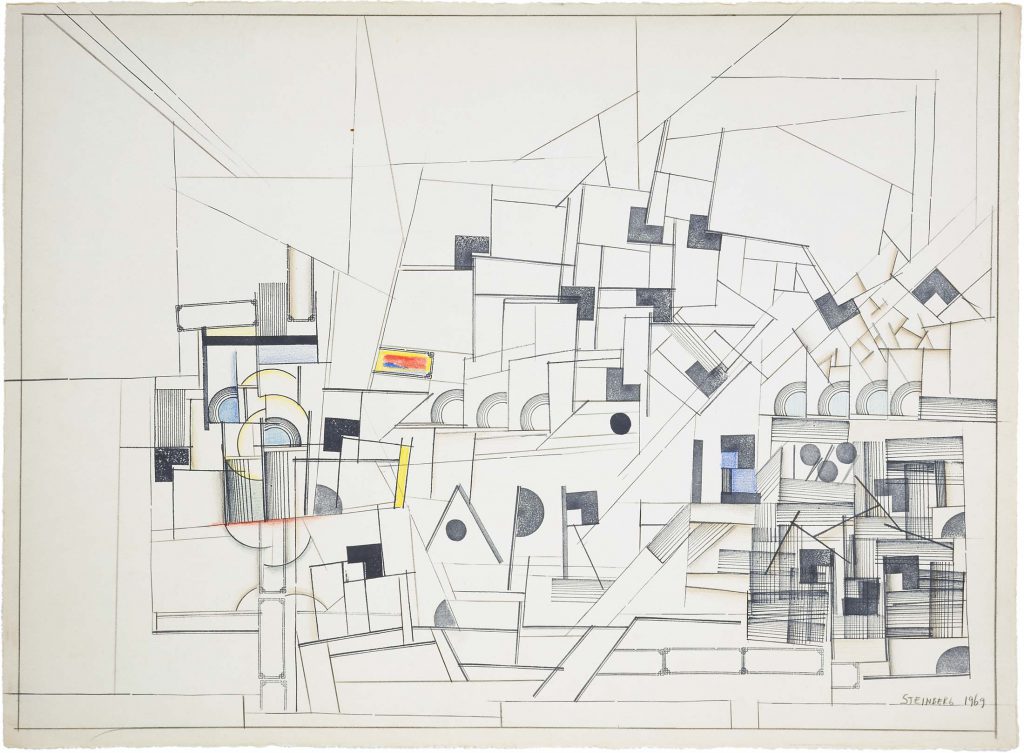
But undisguised autobiographical glimpses of Steinberg the artist enter with the Drawing Table reliefs and continue in both sculpture and drawing till the end of his life.
As for the man Steinberg, pictorial autobiography also emerges around 1970.
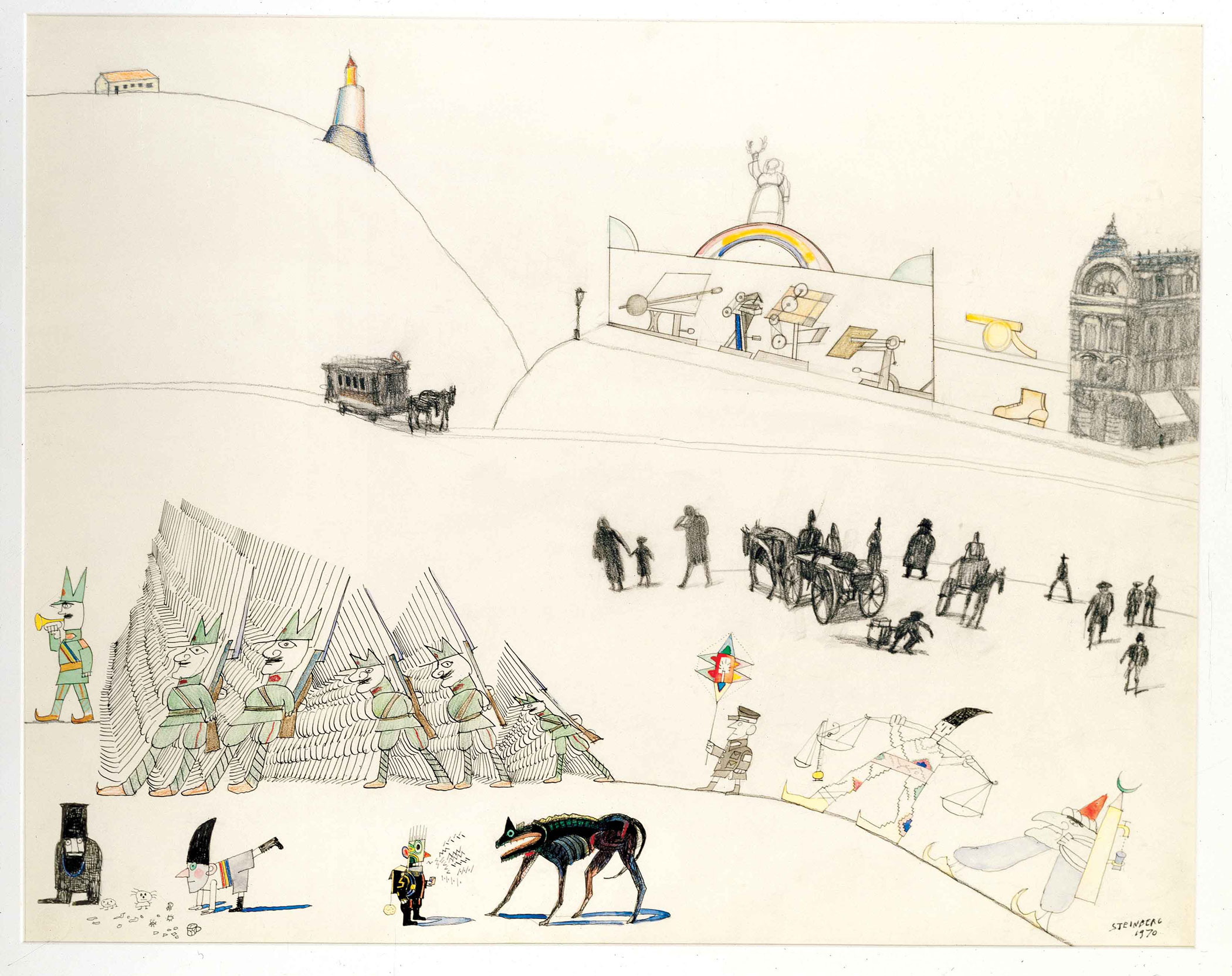
It appears in independent drawings as well as New Yorker portfolios, the latter including a series of 1970-71 that—for the first time— reflects on his Italian years in the 1930s. In these works, some published in a 1974 New Yorker portfolio titled “Italy—1938,” Steinberg turns the Bauhaus and Rationalist architecture he’d learned at the Politecnico into an indictment of Fascist repression, where buildings back streets populated with saluting soldiers and citizens.

Steinberg’s personal history continued to provide subject matter as the decade progressed, probably in response to a project he undertook with Aldo Buzzi. In the summers of 1974 and 1977, Buzzi taped conversations with his old friend, in which Steinberg addressed his early life in Romania and Italy no less than issues of art. 66 Speaking about his past, and reading the transcriptions of the tapes, seems to have spurred him to give pictorial form to his recollections. Two New Yorker portfolios as well as independent drawings envision his boyhood in Romania, first in “Uncles,” where the older generation, dressed in their Sunday best, lines up like proper Central European bourgeoisie.

In the six-drawing “Cousins” portfolio, Steinberg appears three times —in school uniform, wide-eyed in his uncle’s watch shop, and practicing the violin.
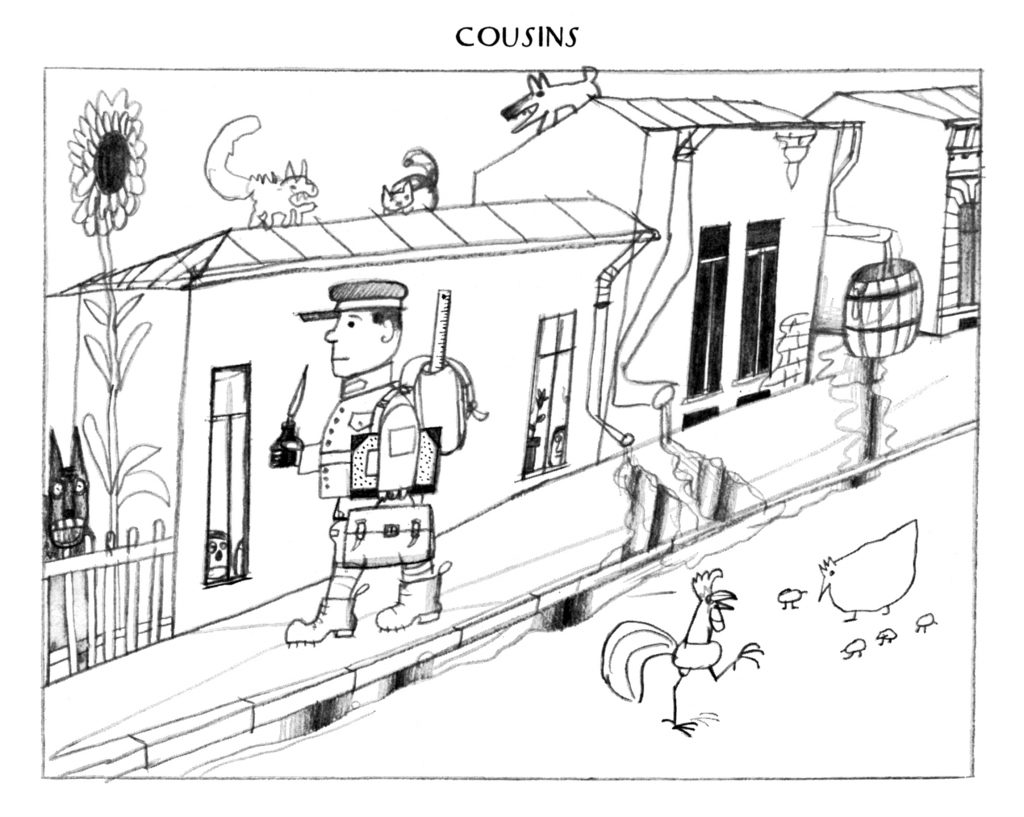
But whatever reality underlies these images is overpowered by visual humor. He “feared autobiography—the last refuge of the scoundrel,” which may explain why even these works remain emotionally distant, oblique in their personal revelations. 67
- back to: Drawing Table Reliefs
- continue to: 1980s-1990s
- PRO Courses Guides New Tech Help Pro Expert Videos About wikiHow Pro Upgrade Sign In
- EDIT Edit this Article
- EXPLORE Tech Help Pro About Us Random Article Quizzes Request a New Article Community Dashboard This Or That Game Forums Popular Categories Arts and Entertainment Artwork Books Movies Computers and Electronics Computers Phone Skills Technology Hacks Health Men's Health Mental Health Women's Health Relationships Dating Love Relationship Issues Hobbies and Crafts Crafts Drawing Games Education & Communication Communication Skills Personal Development Studying Personal Care and Style Fashion Hair Care Personal Hygiene Youth Personal Care School Stuff Dating All Categories Arts and Entertainment Finance and Business Home and Garden Relationship Quizzes Cars & Other Vehicles Food and Entertaining Personal Care and Style Sports and Fitness Computers and Electronics Health Pets and Animals Travel Education & Communication Hobbies and Crafts Philosophy and Religion Work World Family Life Holidays and Traditions Relationships Youth
- Browse Articles
- Learn Something New
- Quizzes Hot
- Happiness Hub
- This Or That Game
- Train Your Brain
- Explore More
- Support wikiHow
- About wikiHow
- Log in / Sign up
- Education and Communications
- College University and Postgraduate
- Academic Writing
How to Write a Biographical Sketch
Last Updated: March 9, 2024 Fact Checked
This article was co-authored by Gerald Posner . Gerald Posner is an Author & Journalist based in Miami, Florida. With over 35 years of experience, he specializes in investigative journalism, nonfiction books, and editorials. He holds a law degree from UC College of the Law, San Francisco, and a BA in Political Science from the University of California-Berkeley. He’s the author of thirteen books, including several New York Times bestsellers, the winner of the Florida Book Award for General Nonfiction, and has been a finalist for the Pulitzer Prize in History. He was also shortlisted for the Best Business Book of 2020 by the Society for Advancing Business Editing and Writing. There are 9 references cited in this article, which can be found at the bottom of the page. This article has been fact-checked, ensuring the accuracy of any cited facts and confirming the authority of its sources. This article has been viewed 555,125 times.
Writing a biographical sketch can help you learn about a figure’s importance and see the world through their eyes. Since you can’t cover a person’s entire life in a sketch, try to focus on their biggest accomplishments, then build the sketch around that. You can even use this technique to write about yourself!
Example Sketches

Researching Your Subject

- For example, suppose you need to write a biographical sketch of poet who lived in the 19th century. Look up poets you’ve covered in class, browse your textbook or anthology of poems, and search online for poets that fit your assignment.
- After reading his blurb in your anthology, you might be interested in learning more about Charles Baudelaire, so you choose him for your sketch.

- For a major historical figure, you’ll probably have more results than you can handle. Search online for your historical figure and “authoritative biography” to find the most important sources.
- If you have trouble finding information about your subject, you might need to choose another option.

- If you’ve chosen a contemporary figure or famous person, searching online might be your best bet. The most credible sources would include reputable news publications, such as the BBC, The New York Times , and NPR.

- You should be able to track down sources at your library or through its interlibrary loan program. If an autobiography or published collection of letters are available, you could also purchase them online or at a bookstore.
- To find good secondary sources, use search terms such as "authoritative" or "definitive biography" of your figure.
- When you find scholarly articles about your figure, check their footnotes or references. You'll definitely want to acquire a book or article about your figure that's referenced in lots of other sources.

- Figure out which of the figure's achievements, qualities, work, and life experience you want to emphasize.
Crafting an Autobiographical Sketch

- For example, writing, "My proudest moment is when I was elected class president," simply states that you're in student government.
- Instead, write why you wanted to be class president: "On a school trip to the state capitol, my congressperson described public service to my class. As they spoke, I remember looking up in awe at the capitol building's towering dome. However, it wasn't awe that inspired my interest in politics; it was the notion that governing is service."

- Suppose a job description lists the skill "Cost management." Writing, "I cut operating costs by 17% at my prior position," just restates a line on your resume.
- Instead, write in your bio, "The complex purchasing system at my last position was like a many-headed Hydra. For every challenge I solved, 2 more came my way. Ultimately, I managed to conquer the beast, consolidated our vendors, negotiated new contracts, and cut our spending by 17%."

- Come up with a thesis as if you were writing about a historical figure. Instead of trying to cover everything you've ever done, focus on 2 or 3 key qualifications.
- Try summing yourself up in a thesis statement, such as "Jane Doe encountered hardships, but every pitfall provided an opportunity to grow." You don't have to include your thesis verbatim in your bio, but it can help you keep your writing focused.
Drafting Your Essay

- A thesis statement for a biographical sketch could be, “The principal themes of Charles Baudelaire’s poetry are rooted in his experience of urban life in Paris and his 1841 voyage to India.”
- If you're writing about yourself, focus on the achievements you're proudest of or those that are most relevant to an application. Additionally, it's usually best to focus on more recent accomplishments.

- For instance, your outline might look like this: I. Thesis: The principal themes of Charles Baudelaire’s poetry are rooted in his experience of urban life in Paris and his 1841 voyage to India. II. Emerging urbanism in Paris A. Describe city life in the 19th century B. Discuss Baudelaire and tavern culture C. Cite and analyze poetic elements: corruption of the city, melancholy, “Spleen” III. Romantic voyage A. Lay the context of the voyage in Romantic poetry B. Discuss Baudelaire’s trip to India C. Cite and analyze poetic elements: ships, the ocean, exoticism

- Your intro should let your reader know what to expect in the coming paragraphs. For instance: "Baudelaire's personal letters and journal entries detail his life in Paris and travel abroad. Analyzing examples from his body of work will demonstrate how these encounters with urbanism and exoticism laid the foundation of his poetry's principal themes."
- For an autobiography, summarize what makes you a winning applicant or state the main points you intend to make about yourself.
- If you're writing an autobiography in the third person, introduce yourself in the first paragraph: "Jane Doe is a postdoctoral research fellow at the University of Georgia."

- For the body an autobiography, describe the events that impacted on you, challenges you overcame, or occasions when you honed your skills.
- Keep in mind your entire personal bio might only be a paragraph. You might introduce yourself in the first sentence, and the "body" might be 2 or 3 sentences long.

- A better sentence would convey exactly why Baudelaire was important. “Charles Baudelaire dismantled Romantic poetry’s unquestioned adoration of nature” is stronger and more specific.

Revising Your Draft

- Check for any places that seem confusing or leave you guessing. If you're not sure what you meant by a statement, your reader will definitely be lost.

Community Q&A
You Might Also Like

- ↑ https://penandthepad.com/write-impressive-biographical-sketch-4531922.html
- ↑ https://open.lib.umn.edu/writingforsuccess/chapter/11-4-strategies-for-gathering-reliable-information/
- ↑ https://www.readwritethink.org/classroom-resources/lesson-plans/writers-workshop-biographical-sketch-1039.html?tab=4#session1
- ↑ https://www.educations.com/articles-and-advice/motivation-letter-for-studies-abroad-13564
- ↑ https://www.cs.cmu.edu/~sfinger/advice/advice.html#biosketches
- ↑ https://www.forbes.com/sites/deborahljacobs/2014/06/03/what-to-do-when-you-need-a-bio-rather-than-a-resume/#65cc18a34e43
- ↑ https://slc.berkeley.edu/you-start-writing-paper-guide-prewriting-techniques-0
- ↑ https://grammar.yourdictionary.com/grammar-rules-and-tips/tips-on-writing-a-biographical-sketch.html
- ↑ https://owl.purdue.edu/owl/general_writing/academic_writing/conciseness/index.html
About This Article

Once you’ve chosen someone to write about in your biographical sketch, choose a key detail about the person’s life, then use that to write a thesis statement. Once you have your thesis, craft an outline made up of 4-5 facts that support your thesis statement. Then, start your essay by introducing the reader to your subject, then follow by describing your thesis and a brief summary of the rest of your essay. The body of your essay should describe facts from your subject’s life that support your thesis. For tips on choosing a figure for your sketch, keep reading! Did this summary help you? Yes No
- Send fan mail to authors
Reader Success Stories
Nov 16, 2016
Did this article help you?
Gurmeet S. Matreja
Sep 20, 2016
Oct 20, 2016
Jun 21, 2017
Elvira Glanville
Feb 18, 2018

Featured Articles

Trending Articles

Watch Articles

- Terms of Use
- Privacy Policy
- Do Not Sell or Share My Info
- Not Selling Info
wikiHow Tech Help Pro:
Develop the tech skills you need for work and life

IMAGES
VIDEO
COMMENTS
An autobiography is generally defined as a piece of literature or written work that tells the story of the life of the writer/author. Similarly, the definition of autobiographical art is artwork expressing something about the artist's life. It should be noted that this type of art is not necessarily the same as a self-portrait.
First and foremost, autobiographical art allows artists to tell their own stories. This can be an empowering process, giving artists the creative freedom to express their thoughts, feelings, and experiences. Artists like Frida Kahlo and Vincent Van Gogh used their art to navigate through personal struggles, creating works that resonate deeply ...
1. Autobiographical art can help artists to process and understand their experiences. 2. It can be a form of self-care for the artist. 3. It can help the artist communicate about their lives and experiences with others. 4. It can provide closure or continuity to the artist's story. 5.
A visual autobiography is a form of self-expression that combines imagery and narrative to convey an individual's personal experiences, thoughts, and emotions. This art form allows artists to communicate their life stories visually, often through photographs, drawings, or mixed media, creating a deeply personal and reflective exploration of identity and personal history.
Only allow a few minutes for this drawing. Start drawing - looking in the mirror. Autobiographical Drawing - Start by looking in the mirror. Self portrait. Now, quickly and without thinking, take another piece of paper and another drawing material, maybe a coloured pencil or pastel and make a second drawing. This time you may not want to ...
A visual autobiography to me is a representation of symbols and characteristics that one uses to describe oneself. The challenge is to choose icons that can accurately express something about yourself while using a minimum of words. In creating their visual autobiographies, I asked students to use images or drawings for at least 80% of the artwork.
This video gives a brief introduction to autobiographical sketches. Also, it provides a rubric to follow when writing an autobiographical sketch. #6thgrade #...
Art as Autobiography. The specifically autobiographic character of the Drawing Tables is not without precedent in Steinberg's oeuvre, though the clues are usually more indirect: the table in a c. 1954 still life is covered with Steinbergian sketches; the drawing entitled November 26,1965 portrays a day in the artist's life, calendar style. 64. Vichy Water Still Life, c. 1953.
Writing an Autobiographical Sketch (also called a vignette) With a focus on sensory details, the prewriting process provides an opportunity for you to brainstorm about the specific incident or event in your life. This is a time when you attempt to recall vivid details about the scene in your life—details that you will use in the writing of ...
1. Come up with a concise thesis for your sketch. You can't include all the information about a person's life in a short biographical sketch. After researching your figure, choose a key detail for your sketch's focus. Then write a sentence that sums up the main point you want to make about your figure. [8]